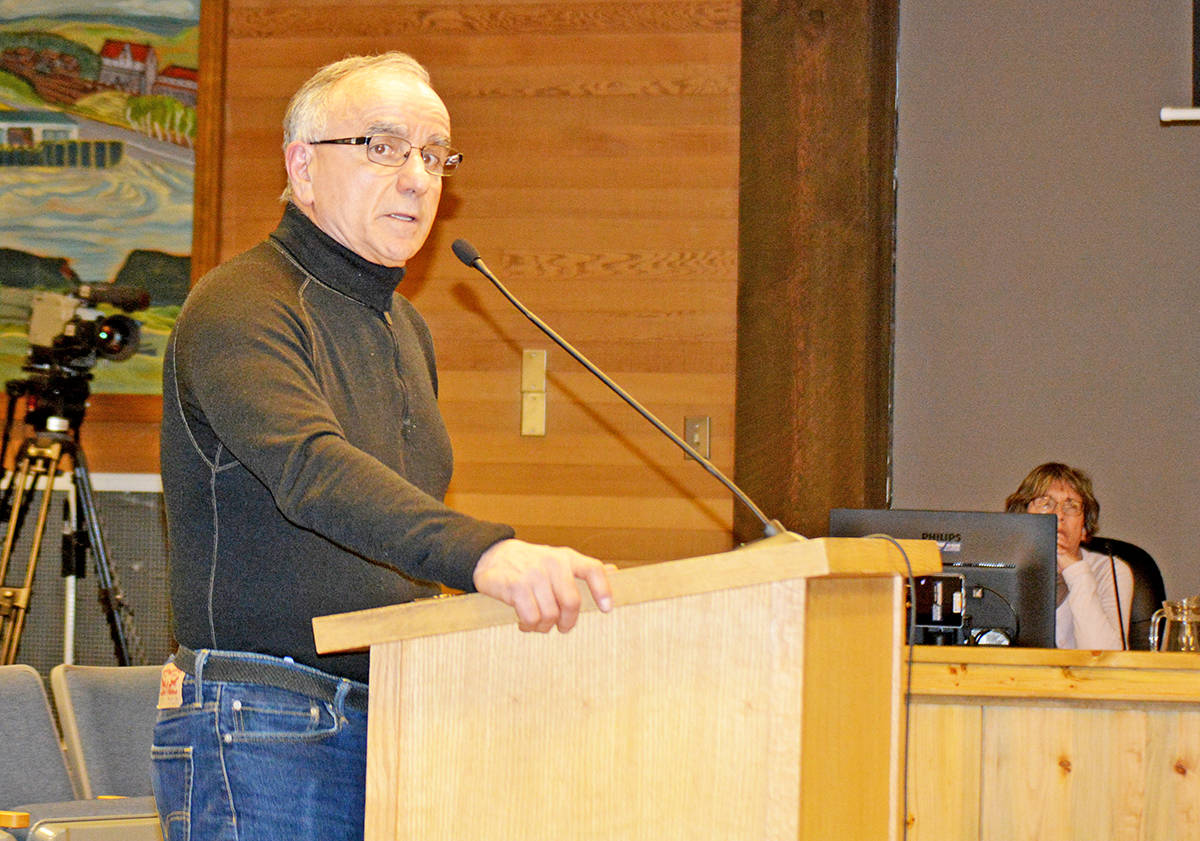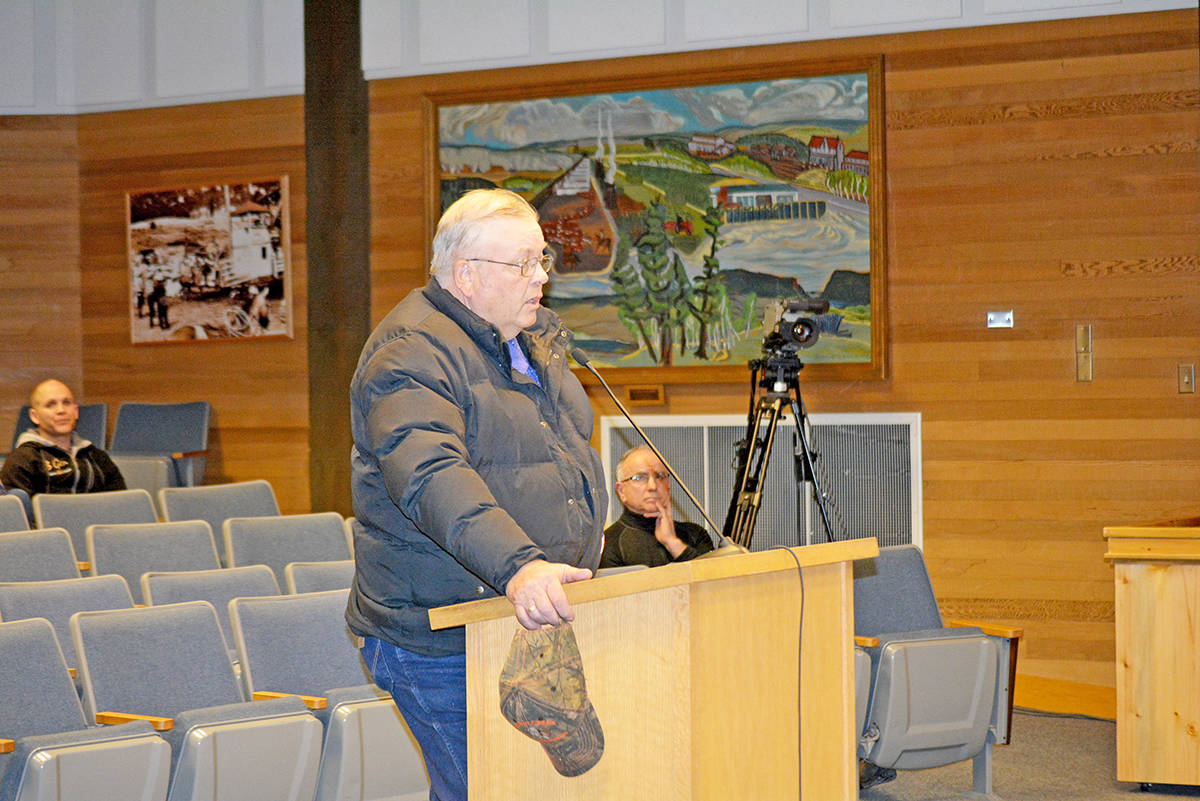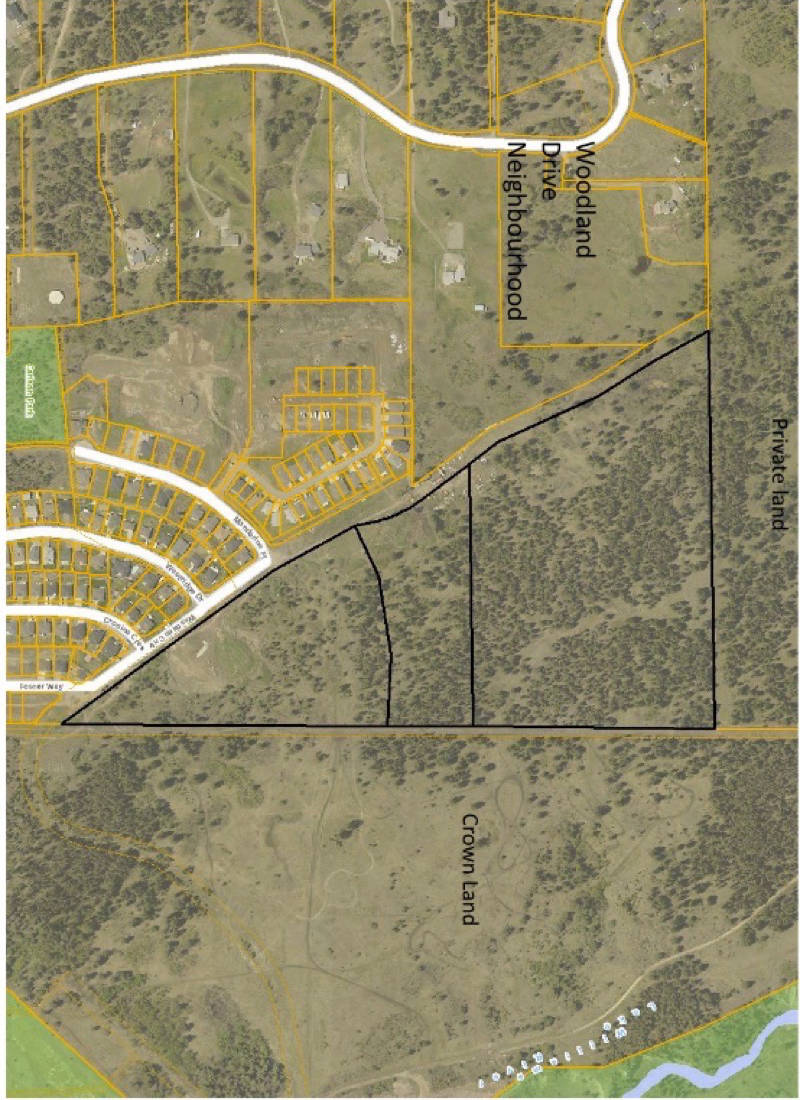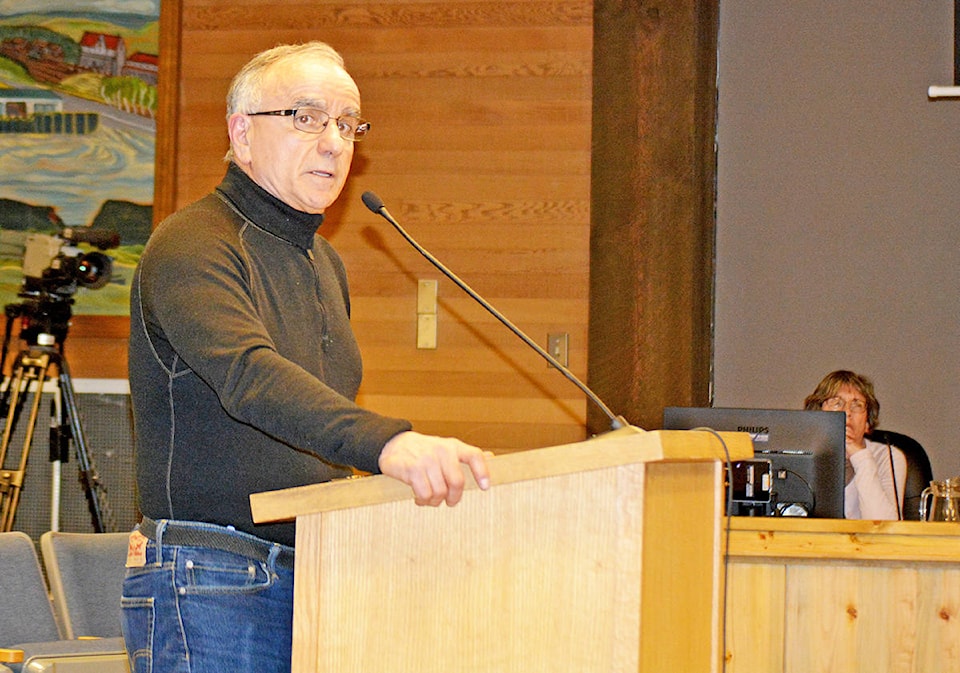Forget backyard chickens and honey bees, Williams Lake city council has gone one step further and approved cattle grazing within city limits.
At its regular meeting Tuesday, council approved a temporary three-year grazing permit in one of the city’s upscale neighbourhoods, despite opposition from residents.
Land developer Luigi Mandarino of Westridge Ventures is seeking the temporary permit so Chimney Creek Stafford Ranch owner Bill Stafford can bring his cattle there to graze on three parcels of undeveloped land Mandarino owns at the end of Westridge Drive.
Stafford’s cattle already graze on an adjacent Crown land grazing permit and during the meeting he told council he would bring the animals into Mandarino’s lots around April 1, take them out by May 15 and then bring them back again in the fall for another month.
Mandarino and Stafford said the grazing will help mitigate wildfire hazards, however, a dozen Westridge area residents attended the meeting and several spoke against the idea.
Read More: Developer pitches cattle for wildfire hazard reduction
Foster Way resident Anne Wilson said she was offended by the suggestion the grazing will mitigate wildfire risks.
“If we’re that concerned about wildfires why aren’t they putting cows in Boitanio Park?” she asked council.
It’s not the grass she’s worried about, she said, noting she is more concerned about broken down machinery and large debris piles on the property.
“They are the biggest threat,” she told council. “Some of that debris is 10 metres adjacent to timber.”
Some residents said they didn’t buy property in the Westridge area, one of the highest assessed-valued neighbourhoods in the city, to have cattle grazing next door.
“I am concerned with that property being tied up when it is prime real estate,” said Westridge resident Jay Cheek, noting he’s heard often there is a shortage of land to build on in the city. “If the current developer doesn’t want to develop it, maybe he should sell it.”
Mandarino Place resident Elke Reiner said the application gave no consideration to the existing animal control bylaw.
“The licensing for animals, size — large or small — their danger to humans, speyed, unspeyed, or addressing stampeding cattle,” Reiner said, noting there is also no liability insurance in place.
“You better think about that before you open up a can of worms,” she told council.
Westridge resident Heward Smedley said he doesn’t have concerns about wildfires when he looks at the lots in question, but if it gets fenced for grazing, and there is a fire down below, there could be a stampede of cattle and no access to get in there with firefighting equipment.
“I would suggest, the council postpone this whole thing until we have bare land to look at,” Smedley said, referring to the fact it is still covered in snow.
Contractor Tyler Boucher has lived in the area for 10 years and spoke in favour of the “temporary” permit.
“I didn’t even know we had cows up near Westridge until this permit came about and my wife kind of laughed and said she walks out there and is walking by cows constantly,” Boucher said. “We are talking about extending the fence a little bit further and allowing them more grazing land.”
Williams Lake Food Policy Council member Kathy Allan lives on Grebe Drive, and also spoke in favour, noting the idea of cattle grazing in a fenced area of the city was fantastic.
“It is a real entrepreneurial brainstorm,” Allan said. “If ranchers are looking for grass and there’s a fire problem let the cows eat the grass to keep the fires down.”
Last summer living on South Lakeside, Allan watched the fires burn on the mountain across the lake and down the road at Sugar Cane.
“It was very traumatic and I have not been the same since,” she said.
Mayor Walt Cobb read a statement from the Williams Lake Fire Dept., pointing out that grazing in the area can assist with reducing the fuel, but it is not the only measure.
Pruning branches and thinning of trees also reduces fuel, Cobb said.
Before council unanimously approved the permit, changes were made that will require it to be reviewed annually, that fencing be installed further away from the original request so the cattle are not grazing near adjacent residential areas, that no herbicides or pesticides can be used, that forestry standard fencing must be installed and set back 10 metres or 33 feet from the property line, that gates are installed as part of the fencing, that a maximum of 30 head of cattle can be there at any one time, and the permit is set for a maximum of three years without automatic renewal.
Coun. Scott Nelson said changes to the permit gave more power to the local residents.
news@wltribune.com
Like us on Facebook and follow us on Twitter



